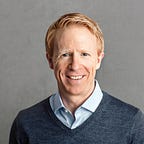America’s Bitter Pill: One Half of the Health Story
There is Still Much the Consumer Can Do
I recently finished Brill’s book on the Affordable Care Act. His story reveals the historical, political and financial details important to understanding the health industry, an industry that seemingly bears little resemblance to other free market institutions. Moreover, it is a cautionary tale about maintaining the financial separation between the health customer (patient) and the health provider (doctors, hospitals, drug manufacturers).
A legacy of WWII price controls, the health care delivery and reimbursement model evolved into a three party system, including a middleman who was not the direct beneficiary of the service (the employer). Customers (employees) still pay for their healthcare both directly through premiums, co-pays and deductibles, and also indirectly through the shadow-tax of reduced wages and income growth. Couple these fiscal dynamics to the emotional state all of us feel when faced with health issues — Brill faced his own health crisis as he was finishing the book– we have a recipe for a political and cultural morass.
Of course, while the reader is learning the basics of the healthcare industry, the underlying story is modern government. Yes, the Obama administration and departmental staffers may have lacked the execution and coordination skills necessary for commercial product launches. However, the intersection of relationships between the executive office and Congress, industry lobbyists, and the agendas of individual players, all create a byzantine layer only the most fool-hardy, but passionate, would willingly enter. This particular tale just happened to play out very visibly on the public stage.
The prescription for all of this, Brill contends, is the wave of Accountable Care Organizations (“ACO’s”) beginning to shape up (pun intended). By asking systems of doctors, hospital networks and insurers to take responsibility for individual and population health outcomes, and not the piecemeal treatments (“fee for service”) currently in place, the health system theoretically will be financially-aligned to not over-treat and over-test. The porridge will be just right, neither too hot nor too cold. Presumably the health system will also innovate consumer engagement.
Maybe. One of the disappointments in the book is the scant discussion of patient compliance and adherence to prescriptions and doctor recommendations. In other books doctors routinely express their frustrations with repeating the same fatherly counsel at annual check ups to little avail. Many reportedly give up, as a recent study indicated. Preventive medicine remains elusive; customer “engagement” cannot be an afterthought.
We, as health consumers, need our own response. The human body is very complex, as any endocrinologist can tell you, but there are certain levers under our control. From a more inquisitive approach in the doctor’s office, to higher usage of the insurance carrier’s help line, there are small, easy wins available.
And we can’t overlook truly preventative measures. Lifestyle is more important today than at any point in human history. “Mismatch diseases,” as Harvard biologist Daniel Lieberman refers to them in his book, “The Story of the Human Body: Health, Evolution and Disease” (my review here), are often avoidable at the individual level. And some of the healthiest decisions are, ironically, the most economical. Broccoli and dog walks may be more valuable than you think.
So where does this leave us? The “employer mandate” of the Affordable Care Act requires employers to offer health coverage or pay an increasingly hefty fee. An unintended consequence of this economic model may be the continued information and transparency chasm between provider and customer. Further, medical jargon, paperwork and the emotions of mortality will present barriers to understanding. However, technologists will innovate to make sense of all of this.
Brill may have a prescription for some of the symptoms. But to address the underlying condition we need a second opinion. Federal policy alone will not counteract the cultural template. Instead, we will increasingly need to move and eat our way to better health outcomes. Fortunately, there is a coming wave of apps for that.
Thanks for reading. Comments and suggestions for other topics welcome.
Below are a few other posts on my experience with digital health and the health industry in general:
· “The Future of Healthcare is Now: My Teladoc Story”
· “Why I Questioned My Surgeon’s Advice. And Glad I Did”
· “Healthcare’s New Model: Pandora, Digital Ads, and Consumerism?”
· “Mobile Health Apps: One Parent’s Maiden Voyage with First Derm”
· “Is Blood Testing The Next Thing? Is Mark Cuban Right (Again)?
Below are reviews of popular titles in the health space:
· Dr. Eric Topol’s “The Patient Will See You Now: The Future of Medicine is in Your Hands” here.
· Steven Brill’s “America’s Bitter Pill: Money, Politics, Backroom Deals and the Fight to Fix Our Broken Healthcare System” here.
· Athenahealth Co-Founder and CEO, Jonathan Bush, “Where Does It Hurt: An Entrepreneur’s Guide to Fixing Health Care” here.
· Dr. Marty Makary’s “Unaccountable: What Hospitals Won’t Tell You and How Transparency Can Revolutionize Healthcare” here.
· Frank Sloan’s and Lindsey Chepke’s, “Medical Malpractice” here.
· Barry Werth’s, “The Antidote: Inside the World of New Pharma” here.
· Dr. Atul Gawande’s “Being Mortal: Medicine and What Matters in the End” here.
· Dr. Robert Wachter’s “The Digital Doctor: Hope, Hype and Harm at the Dawn of Medicine’s Computer Age” here.
I’ve also written about nutrition, money, behavior and other (mostly) related topics. On LinkedIn and Medium.
HSA Coach. Health is WealthTM
Our personal health document storage and health savings account (HSA) educational app is now available. App Store here. Google Play here.
